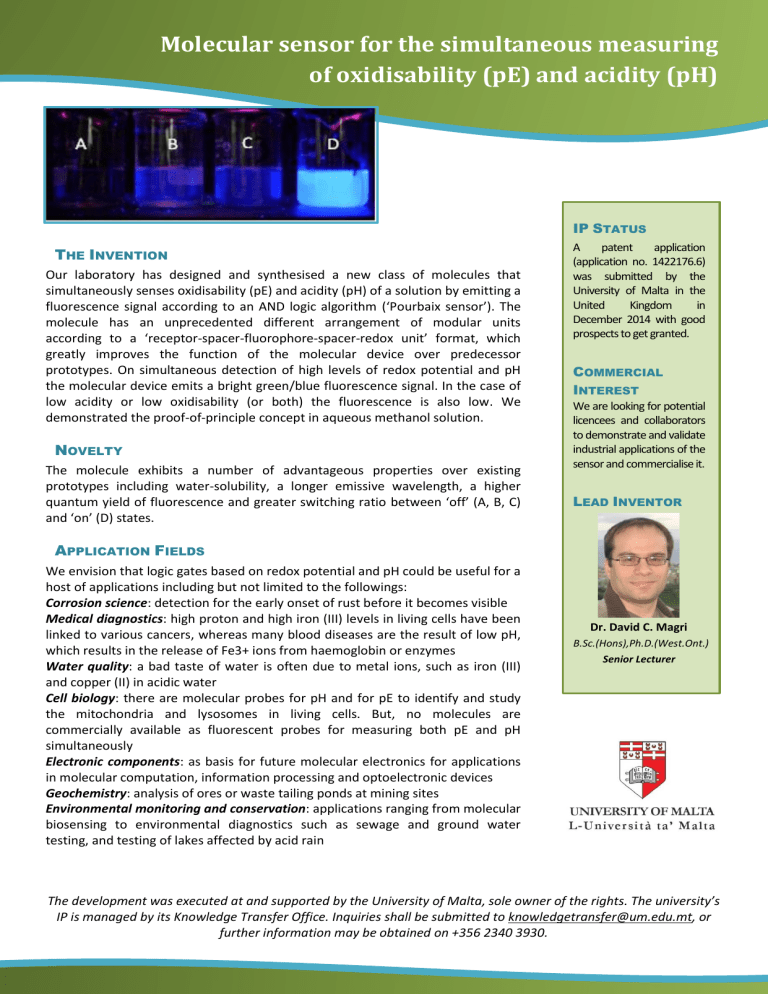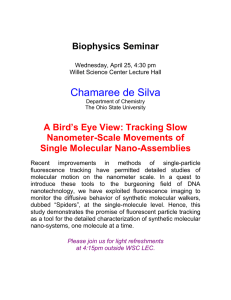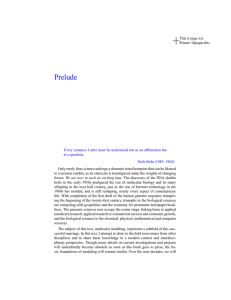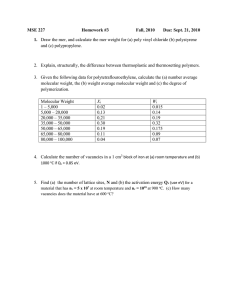T I

Molecular sensor for the simultaneous measuring of oxidisability (pE) and acidity (pH)
T HE I NVENTION
Our laboratory has designed and synthesised a new class of molecules that simultaneously senses oxidisability (pE) and acidity (pH) of a solution by emitting a fluorescence signal according to an AND logic algorithm (‘Pourbaix sensor’). The molecule has an unprecedented different arrangement of modular units according to a ‘receptor-spacer-fluorophore-spacer-redox unit’ format, which greatly improves the function of the molecular device over predecessor prototypes. On simultaneous detection of high levels of redox potential and pH the molecular device emits a bright green/blue fluorescence signal. In the case of low acidity or low oxidisability (or both) the fluorescence is also low. We demonstrated the proof-of-principle concept in aqueous methanol solution.
N OVELTY
The molecule exhibits a number of advantageous properties over existing prototypes including water-solubility, a longer emissive wavelength, a higher quantum yield of fluorescence and greater switching ratio between ‘off’ (A, B, C) and ‘on’ (D) states.
A PPLICATION F IELDS
We envision that logic gates based on redox potential and pH could be useful for a host of applications including but not limited to the followings:
Corrosion science : detection for the early onset of rust before it becomes visible
Medical diagnostics : high proton and high iron (III) levels in living cells have been linked to various cancers, whereas many blood diseases are the result of low pH, which results in the release of Fe3+ ions from haemoglobin or enzymes
Water quality : a bad taste of water is often due to metal ions, such as iron (III) and copper (II) in acidic water
Cell biology : there are molecular probes for pH and for pE to identify and study the mitochondria and lysosomes in living cells. But, no molecules are commercially available as fluorescent probes for measuring both pE and pH simultaneously
Electronic components : as basis for future molecular electronics for applications in molecular computation, information processing and optoelectronic devices
Geochemistry : analysis of ores or waste tailing ponds at mining sites
Environmental monitoring and conservation : applications ranging from molecular biosensing to environmental diagnostics such as sewage and ground water testing, and testing of lakes affected by acid rain
IP S TATUS
A patent application
(application no. 1422176.6) was submitted by the
University of Malta in the
United Kingdom in
December 2014 with good prospects to get granted.
C OMMERCIAL
I NTEREST
We are looking for potential licencees and collaborators to demonstrate and validate industrial applications of the sensor and commercialise it.
L EAD I NVENTOR
Dr. David C. Magri
B.Sc.(Hons),Ph.D.(West.Ont.)
Senior Lecturer
The development was executed at and supported by the University of Malta, sole owner of the rights. The university’s
IP is managed by its Knowledge Transfer Office. Inquiries shall be submitted to knowledgetransfer@um.edu.mt, or further information may be obtained on +356 2340 3930.






